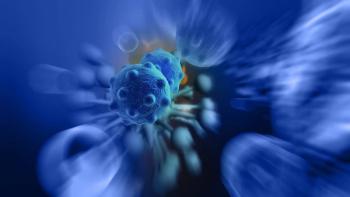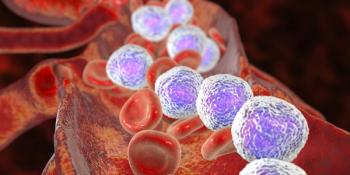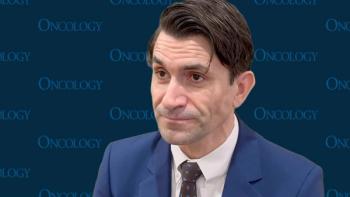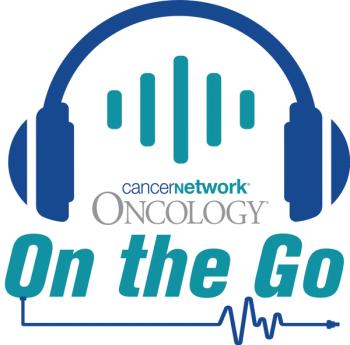
Oncology NEWS International
- Oncology NEWS International Vol 16 No 4
- Volume 16
- Issue 4
Imatinib-Resistant CML May Respond to Nilotinib
In chronic myelogenous leukemia (CML) patients who have failed two tyrosine kinase inhibitor therapies—imatinib (Gleevec) and dasatinib (Sprycel)—the investigational agent nilotinib (Tasigna) has significant clinical activity
ORLANDOIn chronic myelogenous leukemia (CML) patients who have failed two tyrosine kinase inhibitor therapiesimatinib (Gleevec) and dasatinib (Sprycel)the investigational agent nilotinib (Tasigna) has significant clinical activity, according to results of a phase II, open-label, multicenter study.
Nilotinib is a highly selective aminopyrimidine inhibitor with 30 times the potency of imatinib, said Francis Giles, MD, of M.D. Anderson Cancer Center. It is active against 32 of 33 imatinib-resistant cell lines with Bcr-Abl mutations (T315i not included).
Speaking at the 48th Annual Meeting of the American Society of Hematology (abstract 2170), Dr. Giles said that nilotinib has exhibited favorable efficacy and tolerability in early phase trials among patients with imatinib-resistant and imatinib-intolerant Philadelphia chromosome-positive (Ph+) CML. The purpose of the current trial was to evaluate the efficacy of nilotinib in patients with imatinib-resistant or imatinib-intolerant chronic, accelerated, or blast phase Ph+ CML who have also failed treatment with dasatinib.
Confirmed adult CML patients (n = 42), in chronic phase (CP, n = 16), accelerated phase (AC, n = 9), or blast crisis (BC, n = 17) received oral nilotinib at 400 mg daily. In the absence of safety concerns after 28 days, the dose could be raised to 600 mg daily among those patients losing hematologic response or with disease progression, or among those failing to achieve complete hematologic response (CHR) at 3 months, with no minimal cytogenetic response (CyR) at 6 months or no major CyR (complete or partial) at 12 months.
Among 16 chronic phase patients (13 with CHR at baseline), 5 (31%) had a major cytogenetic response (complete cytogenetic plus partial cytogenetic). Eight patients (50%) had a lesser or no cytogenetic response, and 2 patients had disease progression (13%). Five of 13 patients (39%) without CHR at baseline achieved CHR. Among the 3 patients with CHR at baseline, 1 patient (33%) had a major cytogenetic response and 1 (33%) had a complete cytogenetic response.
Among the 26 AP/BC patients, there were 3 CHRs (11.5%), all in BC patients; 3 returns to CP (11.5%); 5 patients with stable disease (19%); 4 (15%) with progressive disease; and 1 (4%) death.
The most frequent grade 3-4 adverse events reported were thrombocytopenia in 11 (26%), neutropenia in 10 (24%), and anemia in 3 (7%). Overall, anemia was reported in 24%, neutropenia in 24%, diarrhea in 21%, asthenia in 19%, and rash in 19%.
Commenting on the 3 of 17 CHRs (18%) among patients in BC, Dr. Giles said in an interview, "To have an 18% response rate in blastic phase is remarkable. To have these responses in patients who have failed both imatinib and dasatinib is quite impressive. The further very significant implication is that even in these most refractory patients, there is no cross-resistance."
Dr. Giles called the fact that there was at least some response in half of the chronic phase patients "remarkable" as well. How long responses last, he cautioned, remains to be seen.
Articles in this issue
over 18 years ago
Curcumin Evaluated for the Treatment of Pancreatic Cancerover 18 years ago
Tykerb Approved for Metastatic HER2+ Breast Cancerover 18 years ago
Drug for BPH May Also Reduce the Risk of Prostate Cancerover 18 years ago
Phase III Trial of Prostvac-VF Is Launchedover 18 years ago
Electronic System Reminds Patients to Schedule Examsover 18 years ago
Phase II Trial of Panzem for Renal Cell Carcinoma Initiatedover 18 years ago
Chemotherapy May Enrich Tumorigenic Cells in Breast Caover 18 years ago
Watchful Waiting Management for Prostate Ca a Hard SellNewsletter
Stay up to date on recent advances in the multidisciplinary approach to cancer.





















































































